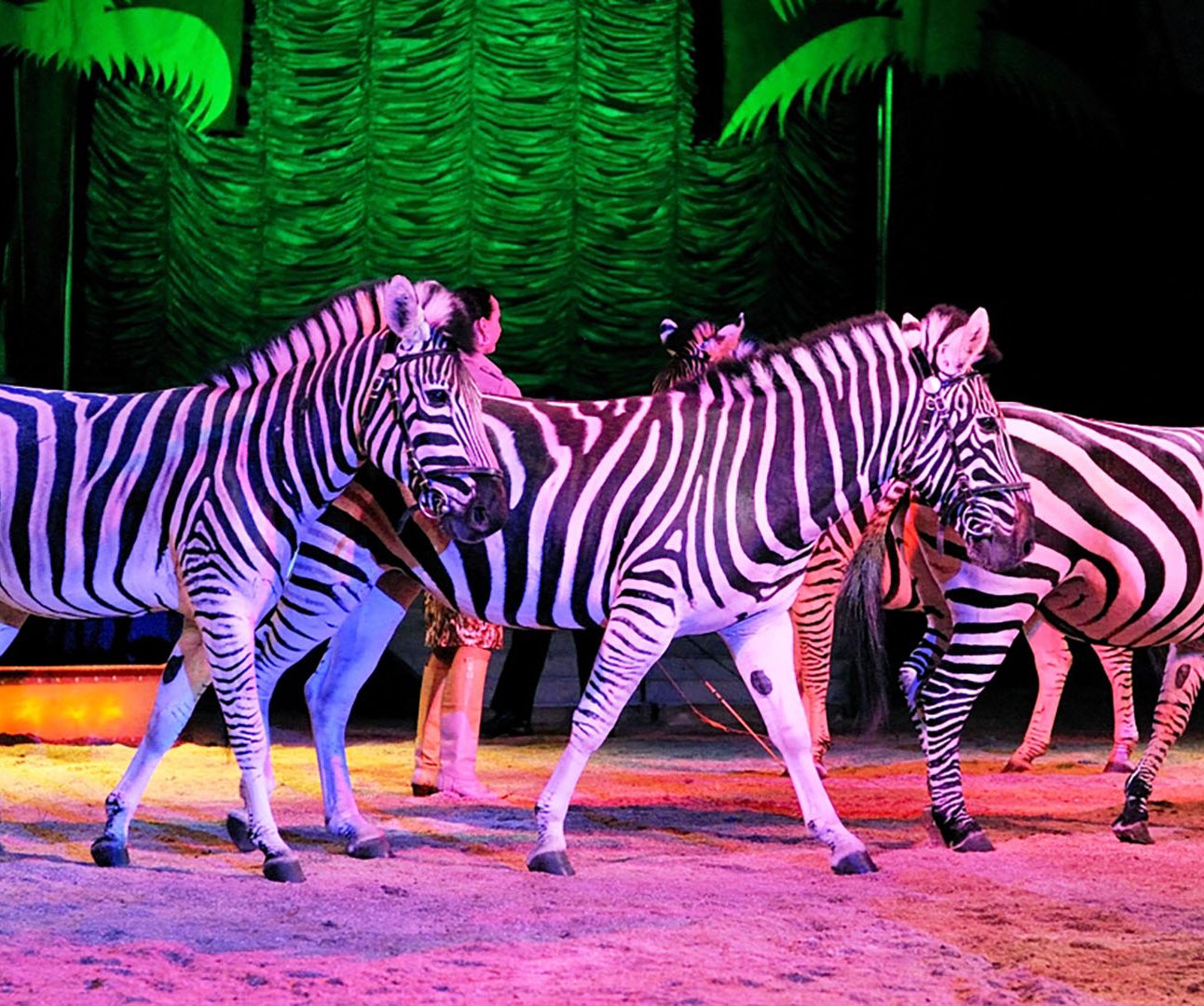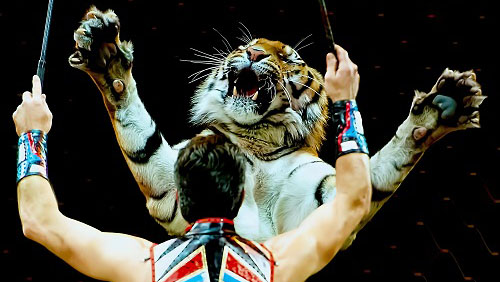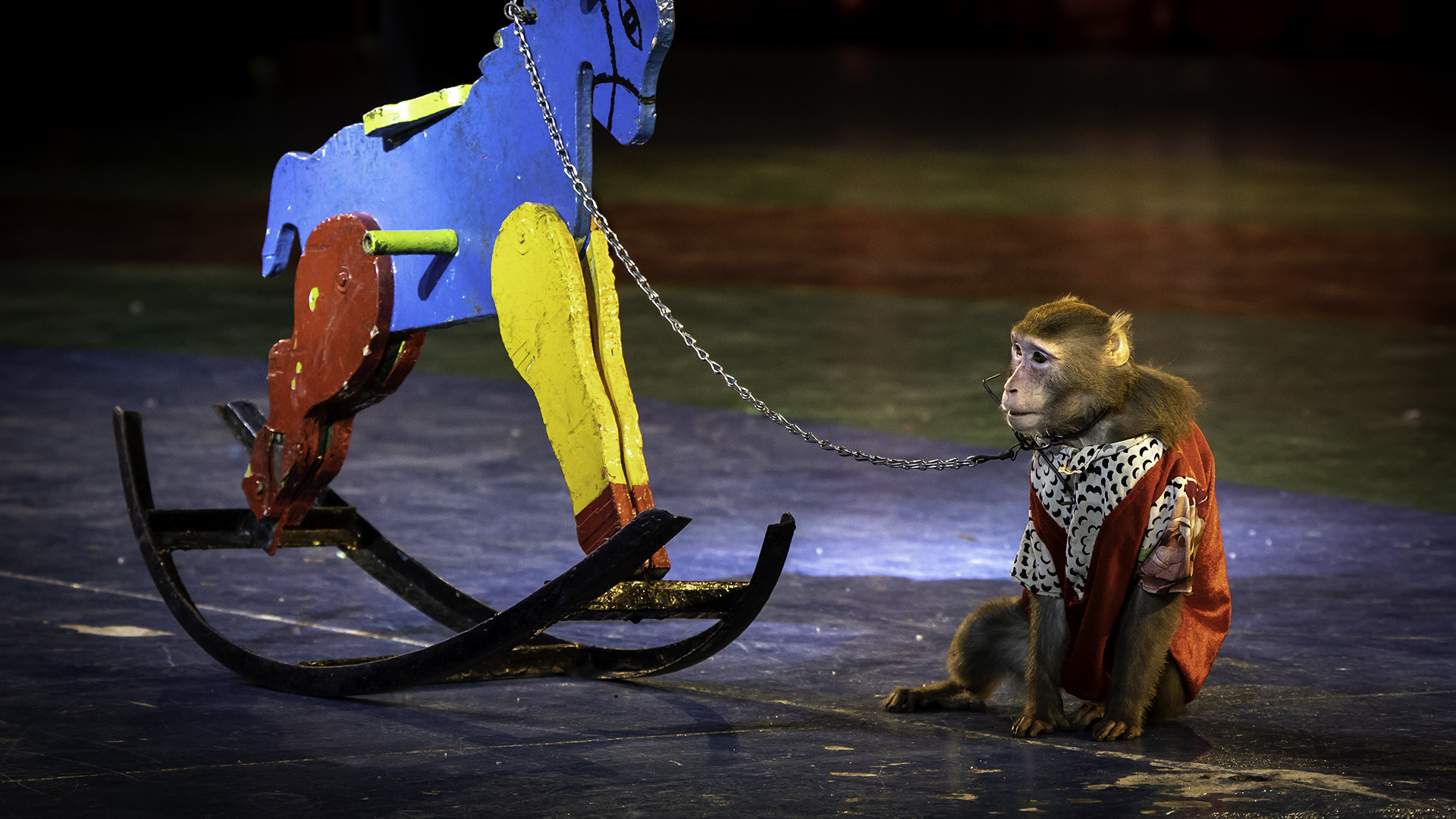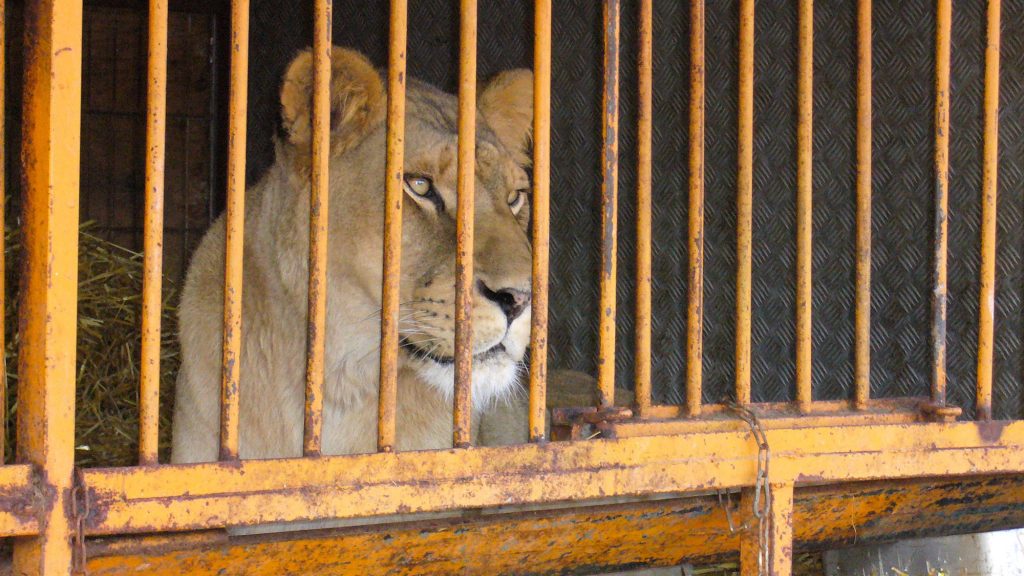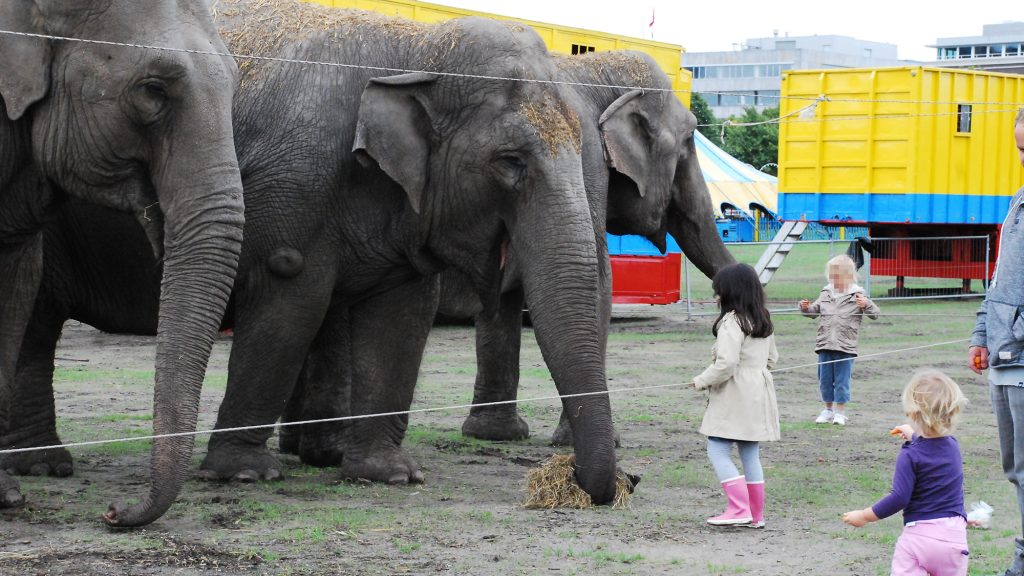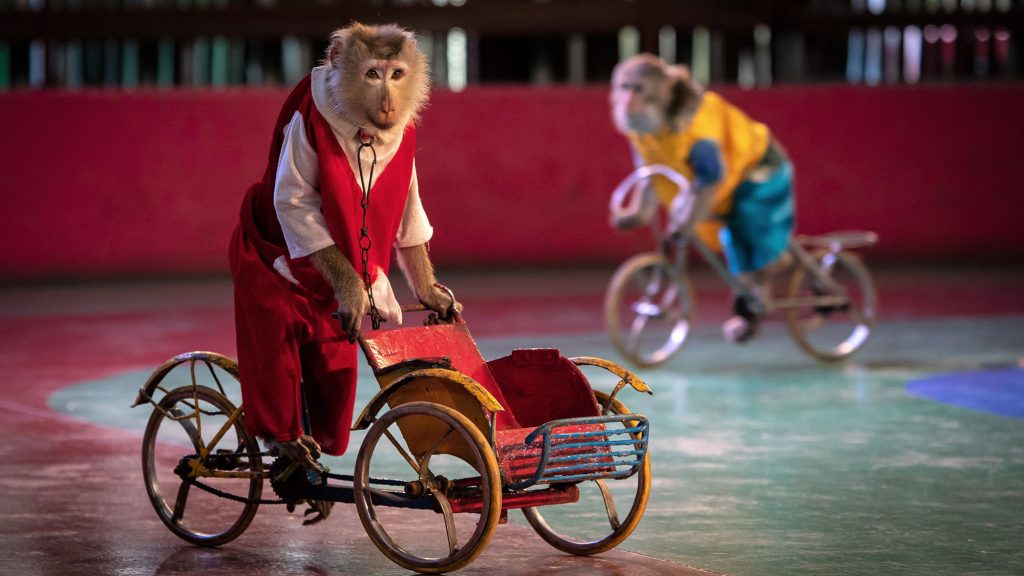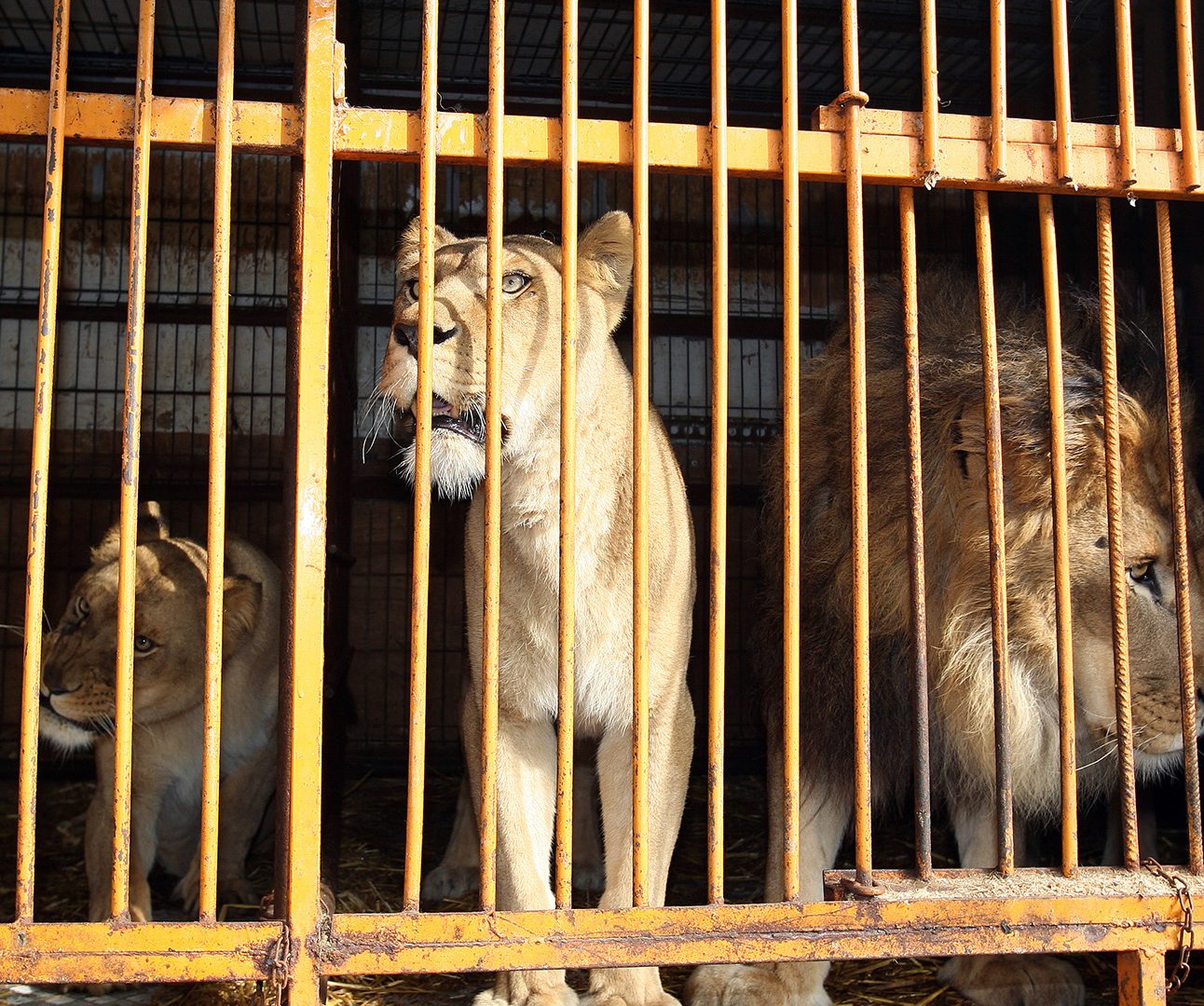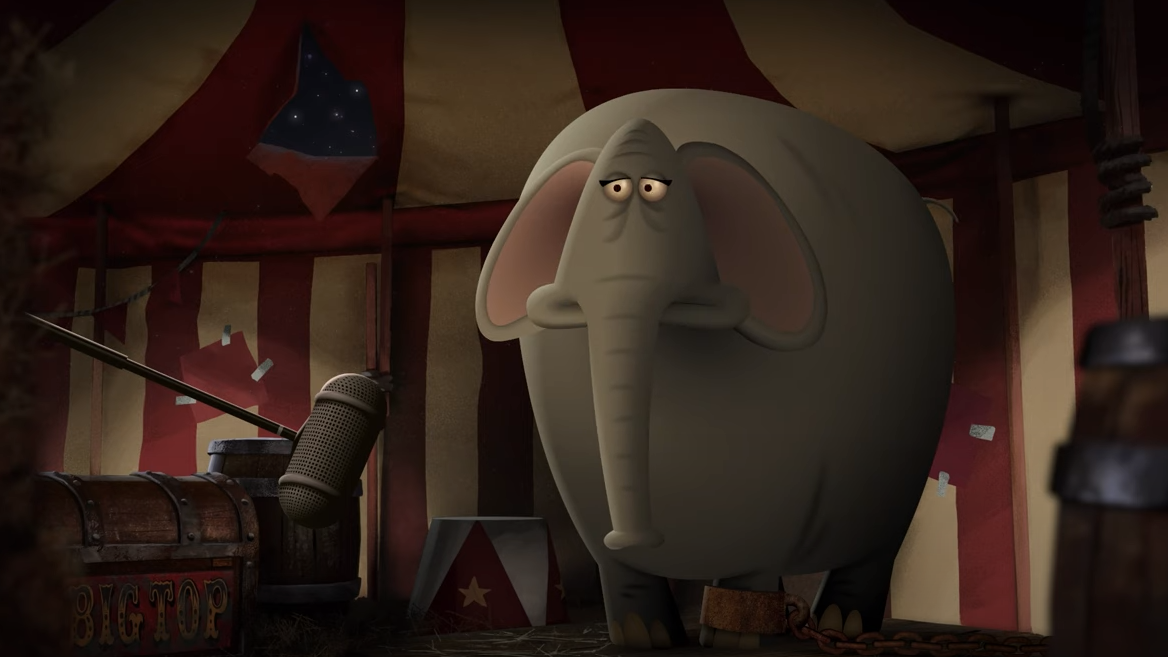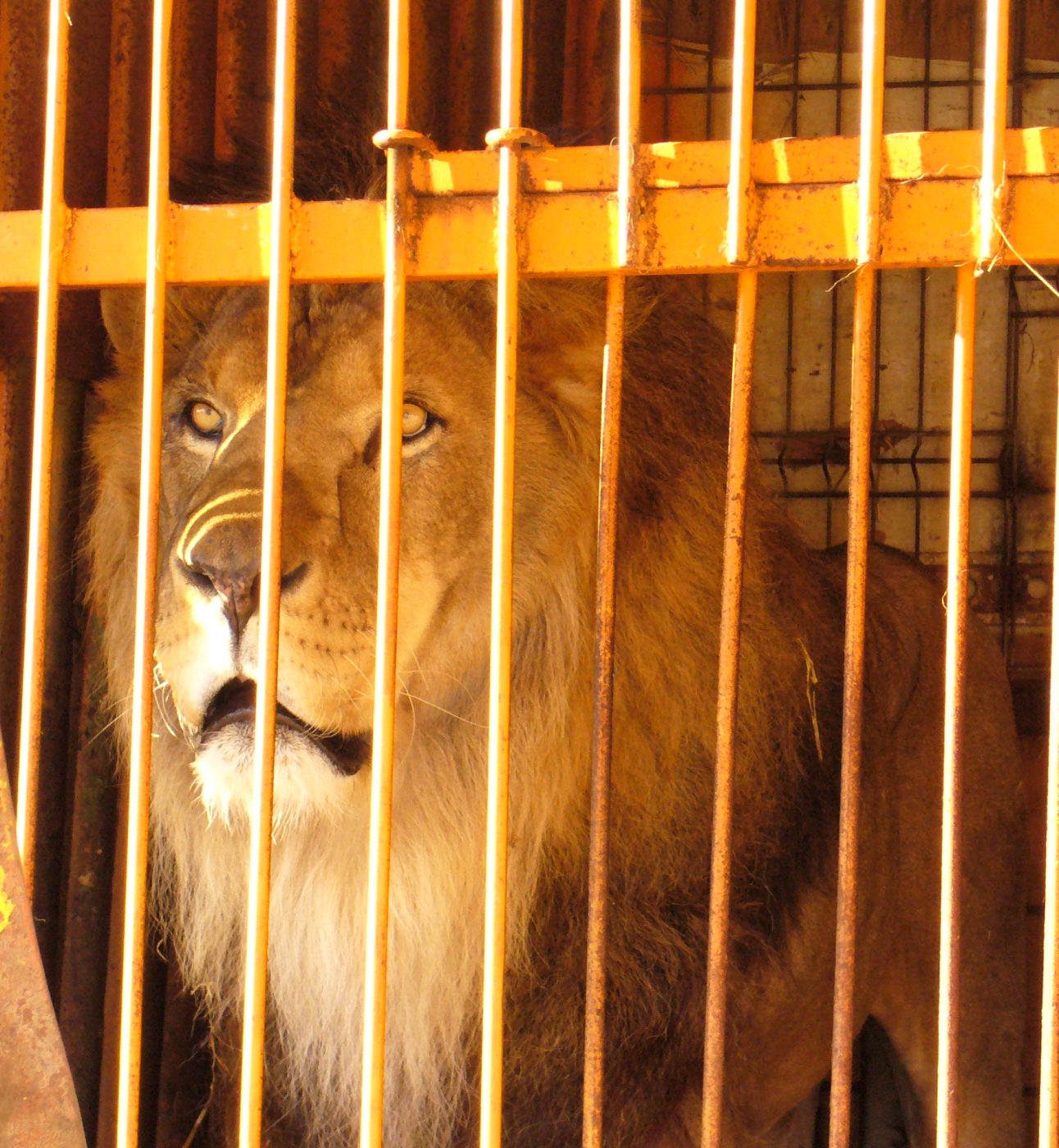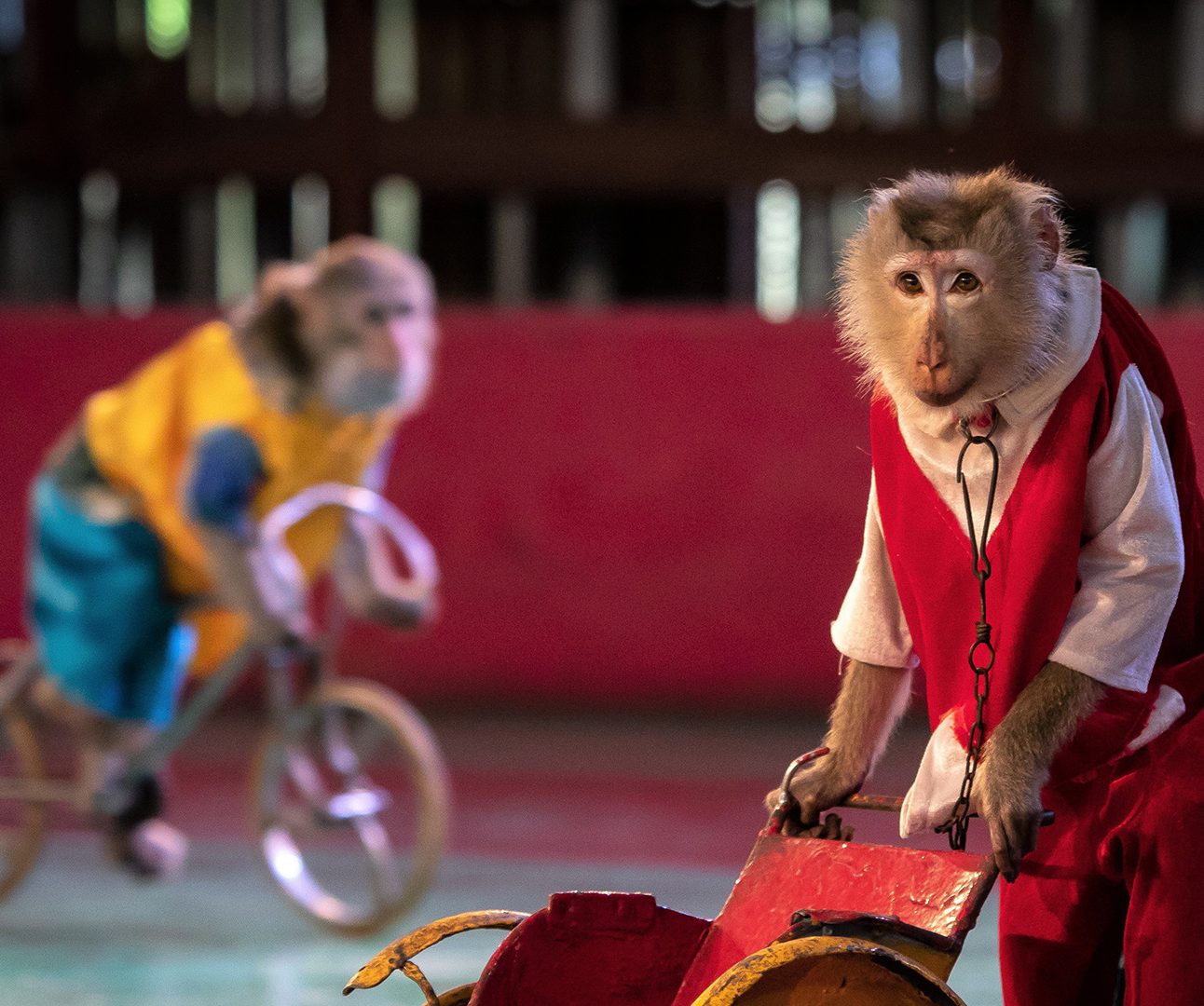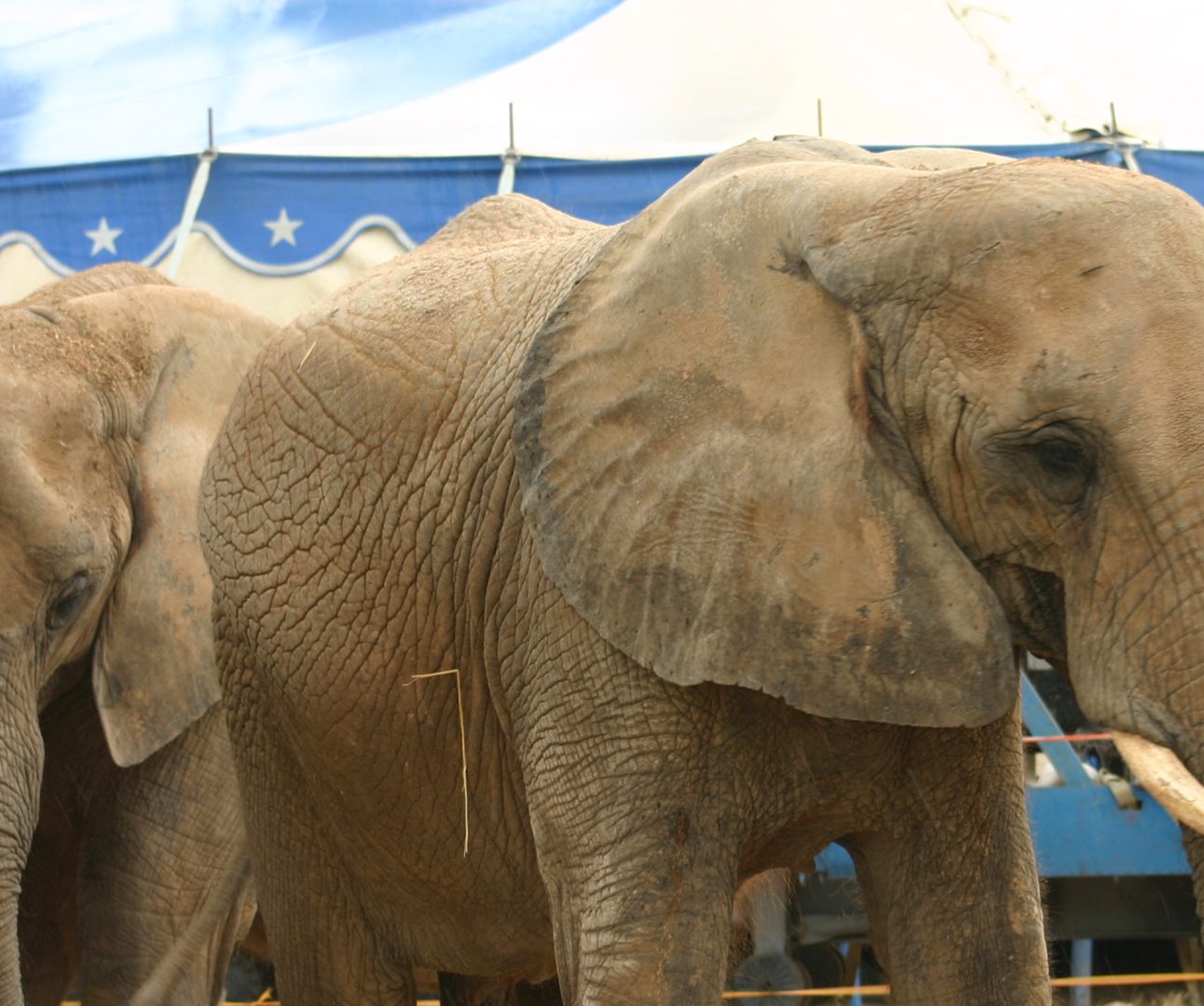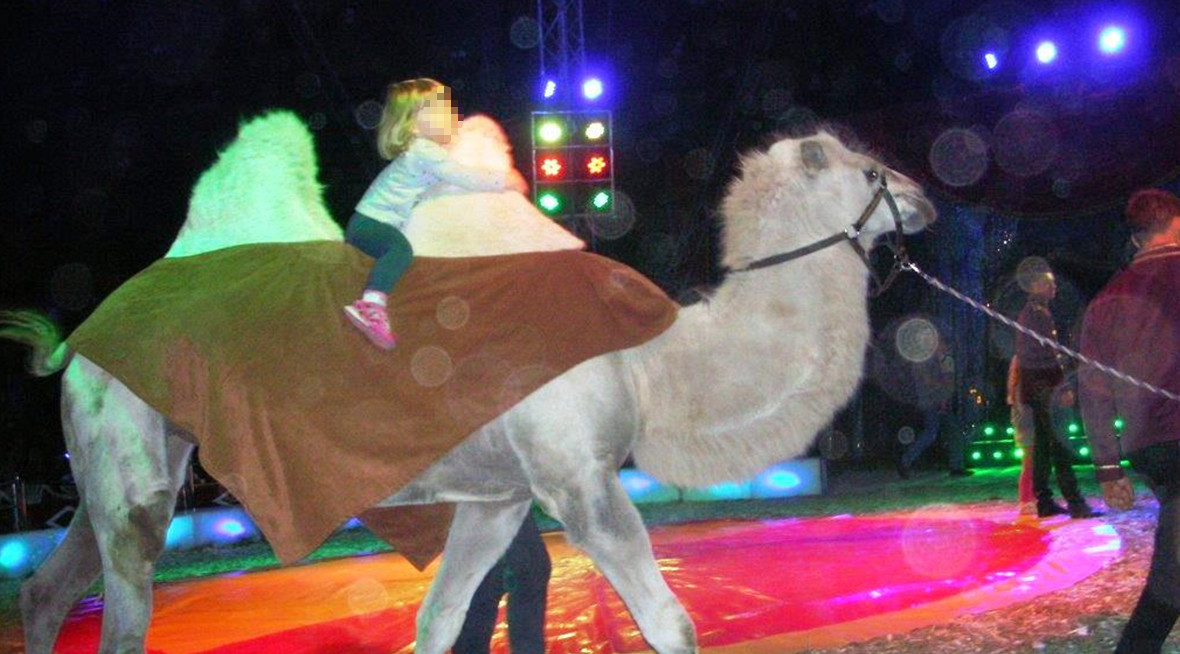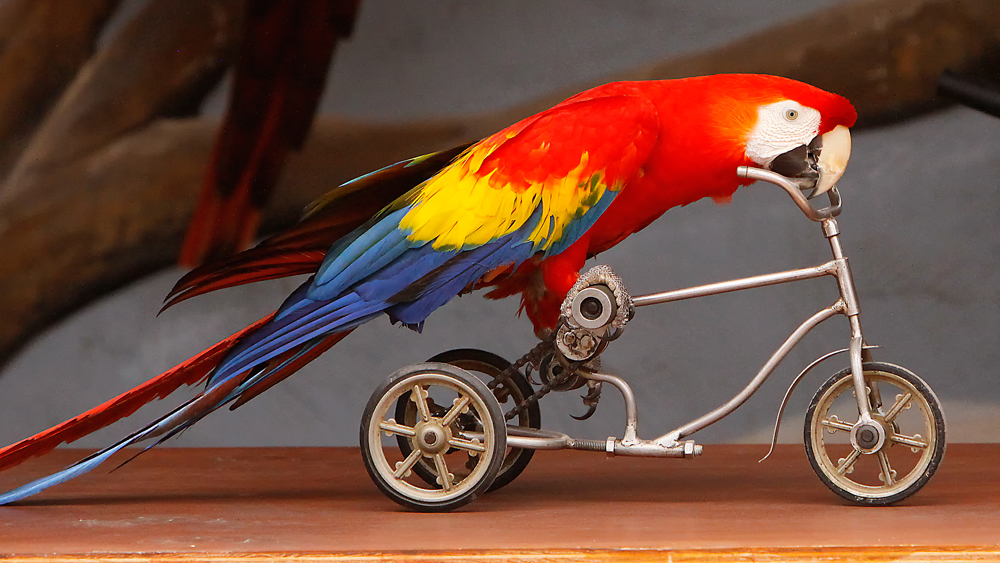
(c) The Torch (Flickr creative commons)
The way performing animals are trained cannot usually be easily observed. However, many undercover investigations and reports from ex-trainers have revealed evidence of mistreatment or abuse of animals. The training often relies on physical domination and fear, in an attempt to ensure the constant attention and compliance of the animal in front of an audience.
The myth of ‘educational’ shows
Many animal shows, presentations or public interactions at captive facilities are marketed as educational. Yet, these shows often involve animals performing unnatural behaviours, such as sea lions balancing balls on their noses, parrots roller-skating, elephants standing on their heads or painting pictures, monkeys riding bicycles, or tigers jumping through hoops of fire.
Some shows may involve captive animals demonstrating seemingly ‘natural’ behaviours, such as bird of prey and parrot flight displays. However, these animals will require training in order to learn the cue to perform behaviours on demand. Even when animals appear to be performing natural behaviours during a show, it is certainly not natural for animals to perform these behaviours on demand in front of crowds of peoples or loud audiences.
Shows may sometimes provide information about the species involved, but others may be accompanied by loud music or ‘comedic’ activities. Bearing no resemblance to the species’ behaviour in the wild, these presentations cannot be classed as ‘educational’ and can seriously compromise the welfare of the individual animals involved. Some activities may lead to animals developing serious health problems, for example, joint problems might develop in elephants from unnatural weight-bearing tricks, such as standing on their heads or hind legs.
Training techniques
Animals used in shows may be trained to perform tricks or behaviours using a ‘positive reinforcement’ technique, where the animals may receive a reward for performing the desired task, usually food. Others may undergo more abusive methods, relying on fear and domination, to make sure they learn their cue to perform in front of an audience. However, both methods usually involve repetitive actions and training regimes, which do not prioritise the welfare of the animals.
The lifelong impact of subjecting wild animals to this training should not be underestimated.
